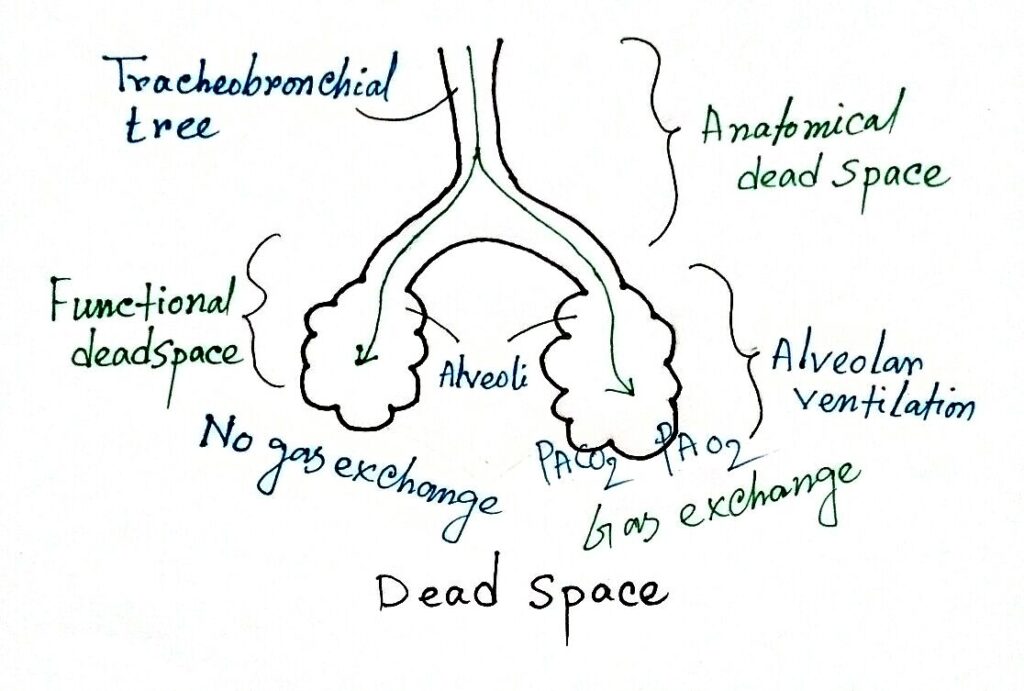
Its calculation requires exclusion of ventilation occurring in the anatomical dead space. in a passive mechanically ventilated patient on volume control (VC) mode, V̇ E = V T x RR.Īlveolar ventilation ( V̇ A the subscript ‘A’ denotes ‘alveolar’) is the amount of ventilation occurring in the alveoli in one minute. Minute ventilation ( V̇ E the subscript ‘E’ denotes ‘exhaled’) is the total ventilation in one minute (units: L/min). At this point, it is helpful to define minute ventilation and alveolar ventilation : V D /V T is a common way to quantify dead space.

The fraction of the tidal volume that does not contribute to gas exchange is known as dead space fraction (V D /V T where V T = tidal volume and V D = dead space volume). A certain amount of dead space is normally present in every person (this is known as anatomical dead space: see below).

This concept can be extended to include factors that cause a dead space effect.

Simply put, dead space represents the volume of ventilated air that does not participate in gas exchange.


 0 kommentar(er)
0 kommentar(er)
